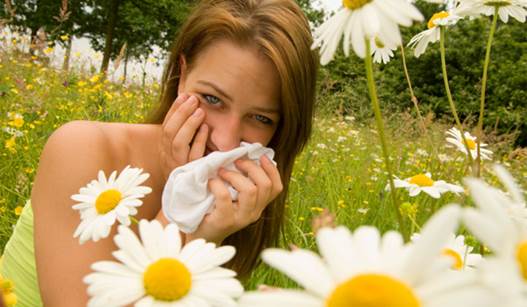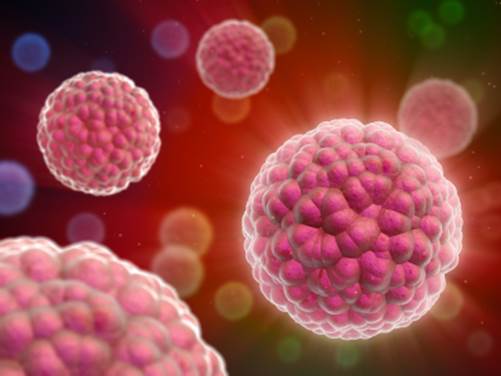It's not just your imagination: Rates of
seasonal allergies are soaring. Protect yourself by getting the facts straight on
how and how not to stop the sneezing.
Runny nose, watery eyes… Oh, no it’s hay
fever time again! Allergic rhinitis (aka seasonal sniffling) has doubled in
early of the last three decades, and about 40 million Americans now have it,
according to the American College of Allergy, Asthma, and Immunology (ACAAI).
Many factors may explain this trend, including air pollution and climate
change, says Leonard Bielory, M.D., an allergist at Rutgers University.
"Environmental shifts affect the pollination patterns of plants, and
irritants in the air can cause inflammation that exacerbates allergies and
asthma." Improved hygiene practices play a role as well. We're exposed to
fewer germs, so our immune systems are more apt to overreact when in contact
with allergens.

Environmental
shifts affect the pollination patterns of plants, and irritants in the air can
cause inflammation that exacerbates allergies and asthma
Whatever the cause, if you're among those
who suffer every spring and fall, you know all too well what this means;
discomfort, congestion, and fatigue. It doesn't help that there's a lot of
misinformation out there about how you should treat, or prevent, an allergy
attack. We asked the experts to help debunk eight common misconceptions.
Myth #1
Seasonal allergies are nothing serious.
Reality: They might not seem like a big
deal, but allergies can make it difficult to sleep and raise the risk of
respiratory infections. And, uncontrolled, they can trigger asthma which can be
life-threatening. Allergies may take a toll on your lifestyle too, as many
sufferers miss out on social and recreational activities because they think
they must stay indoors, says Jennifer Collins, M.D., an assistant professor of
allergy and immunology at the New York Eye and Ear Infirmary. They're also a
major cause of absenteeism and presenteeism (meaning you show up for work or
school but can't get much done).
Myth #2
If you've reached adulthood without
allergies, you're in the clear.
Reality: A reaction to pollen or other
triggers can happen at almost any age. Allergies do have a genetic component,
but your environment can determine when those genes might be expressed.
"We're seeing a lot of patients developing hay fever for the first time in
their 20s and 30s," says Neal Jain, IVL.D, a board-certified allergist in
Gilbert, AZ, and a fellow of the American Academy of Allergy, Asthma, and
Immunology. Trying to distinguish a cold from allergies? You might need to see
a doc to nail it down (a skin test can reveal which allergens might be plaguing
you), but here are two clues; the typical cold resolves within two weeks and
won't make your nose, eyes, or the roof of your mouth itchy.

A
reaction to pollen or other triggers can happen at almost any age
Myth #3
Once you start sneezing or itching, hit the
meds ASAP.
Reality: If last year was a sneeze-fest,
don't delay you'll get best results by treating seasonal allergies before you
feel lousy. "It's much harder to get symptoms under control once your
nasal passages are swollen and inflamed” says Jain. Anti-histamines including
OTC options such as Allegra, Ciaritin, and Zyrtec should be initiated a few
days before allergy season hits; they'll block the release of histamines, the
chemicals that make you feel itchy. If you're using prescription nasal sprays,
you'll want to begin at least one to two weeks ahead just about when you see
trees starting to bud. To figure out the exact timing, consult your doctor or
the allergy forecast at Pollen.com.
Myth #4
Allergy shots are useful only for severe
cases.
Reality: Getting a series of injections,
called immunotherapy, helps about 80 percent of patients with allergic
rhinitis. They build up your tolerance to offending substances by exposing you
to small amounts of them, explains Jain. "Shots can potentially cure you,
so in most cases you won't need other medication,” he says. "Plus, there's
some evidence that they can keep you from developing additional allergies and
asthma," The main downside is that the injections are time-consuming; most
patients will need shots every week for the first six months, then monthly for
about three years. And, of course, there's a slight ouch factor (though some
allergists now offer sublingual immunotherapy, which involves placing drops
under the tongue).

Getting
a series of injections, called immunotherapy, helps about 80 percent of
patients with allergic rhinitis
Myth #5
If I stay indoors on high-pollen days, I'll
feel fine.
Reality: Even if you limit your time
outside, allergens can infiltrate your home. Remember to keep windows closed,
vacuum regularly, and change the filters on your air conditioner and air
purifiers as directed by the manufacturer. If you do want to be in the great
outdoors say, for a run try to head out in the early a.m. (before 10), when
pollen counts tend to be lowest, says Collins. On your return, leave your shoes
at the door, then shower and change right away, as pollen can cling to your
hair, skin, and clothing.
Myth #6
Locally produced honey is an effective
cure.
Reality: There’s no solid proof to support
this theory, which holds that honey produced by the bees in your neighborhood
contains a small amount of allergens, and that consuming it can help diminish
your reaction. Researchers at the University of Connecticut Health Center put
the idea to the test and found no significant difference among those who ate
local honey, mass-produced honey, or an imitation-honey syrup. "Local
honey might not contain enough pollen or protein to 'desensitize'
someone," says Jain. "Also, bees collect pollen from flowers not the
grass, trees, and weeds that cause most people problems."

Locally
produced honey is an effective cure
Myth #7
The more often you irrigate your sinuses,
the better.
Reality: It's possible to overdo it, says
Jain. Using a neti pot or squeeze bottle filled with a mixture of salt water
and baking soda will flush out pollen and mucus, which can reduce congestion
and postnasal drip, "But we need some mucus to help protect against
bacteria, " he explains, "and if you wash away too much it could
potentially make you more prone to infection." He suggests limiting nasal
irrigation to a few times a week (or daily for one to two weeks at the peak of
the season). Remember to use water that has been distilled or microwaved for
one minute to sterilize it. If you prefer, you can use saline nasal sprays;
just steer clear of anything with a decongestant, as those can be addictive.
Myth #8
Moving to a drier state can eliminate
symptoms.
Reality: You can run, but you can't hide
from allergens! "You could have trouble anywhere in the country; you'll
just have different triggers," says Collins. 'A lot of patients say, 'If I
move to Arizona, I'll feel better,' but the desert has cactus flowers,
sagebrush, and mold, and those could prompt symptoms too."